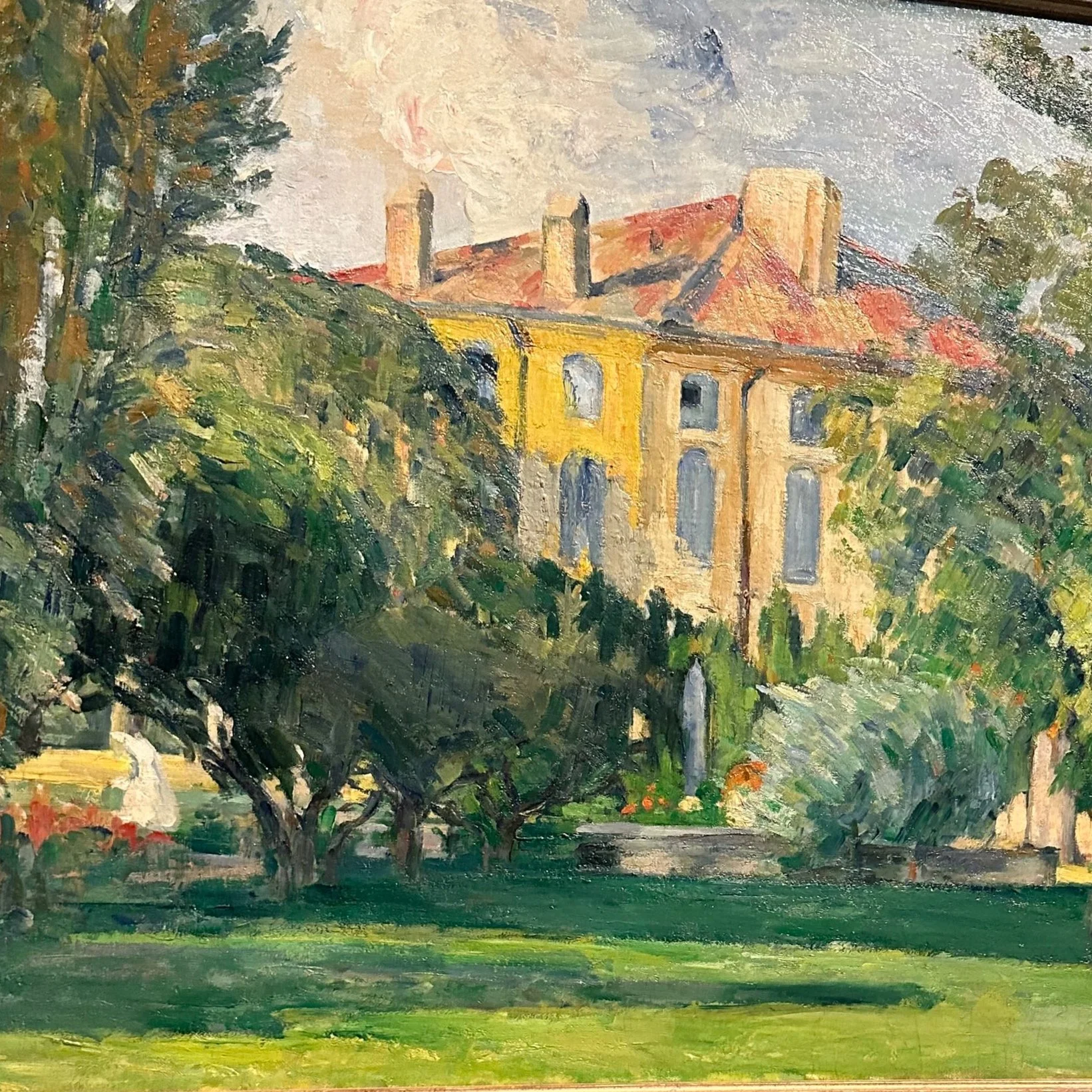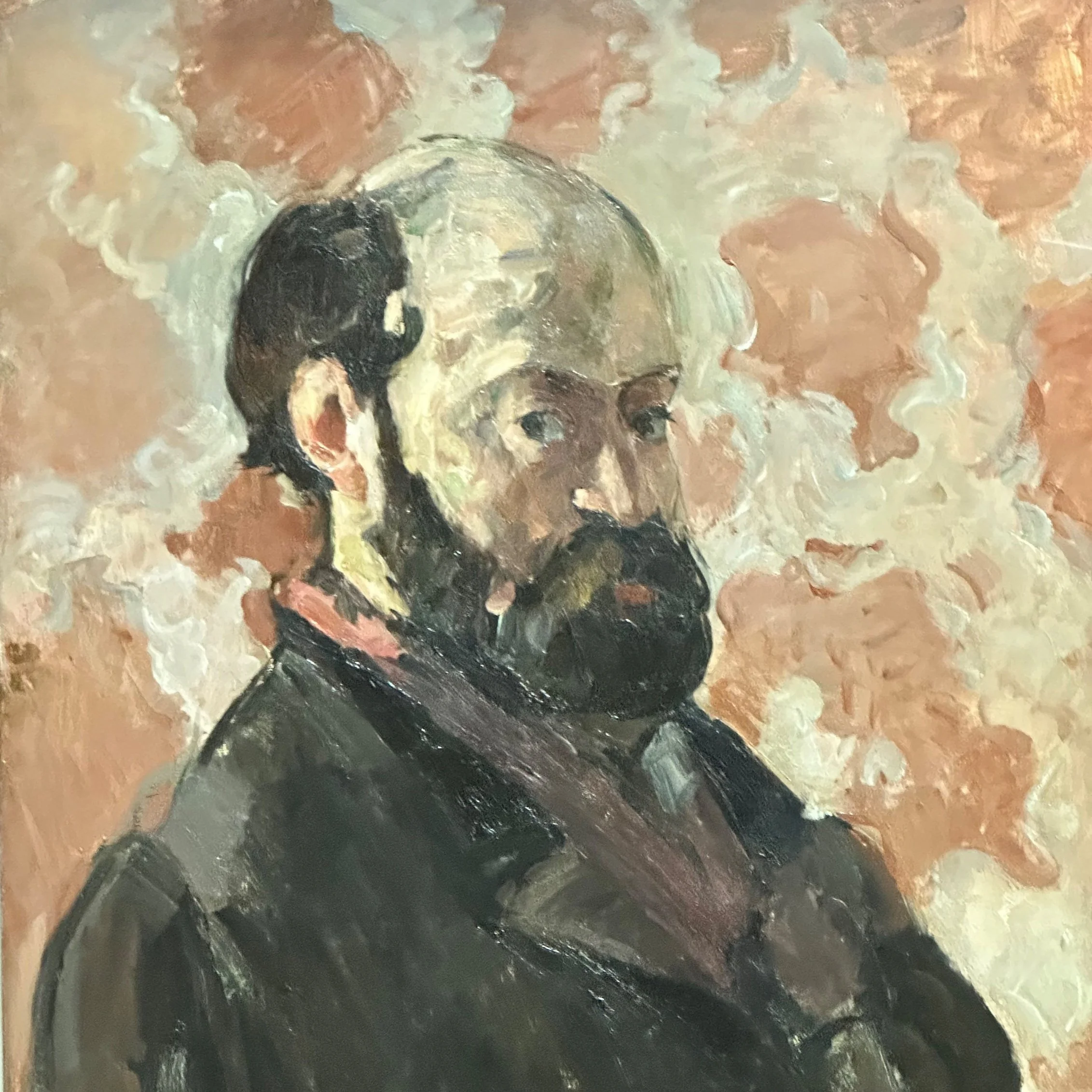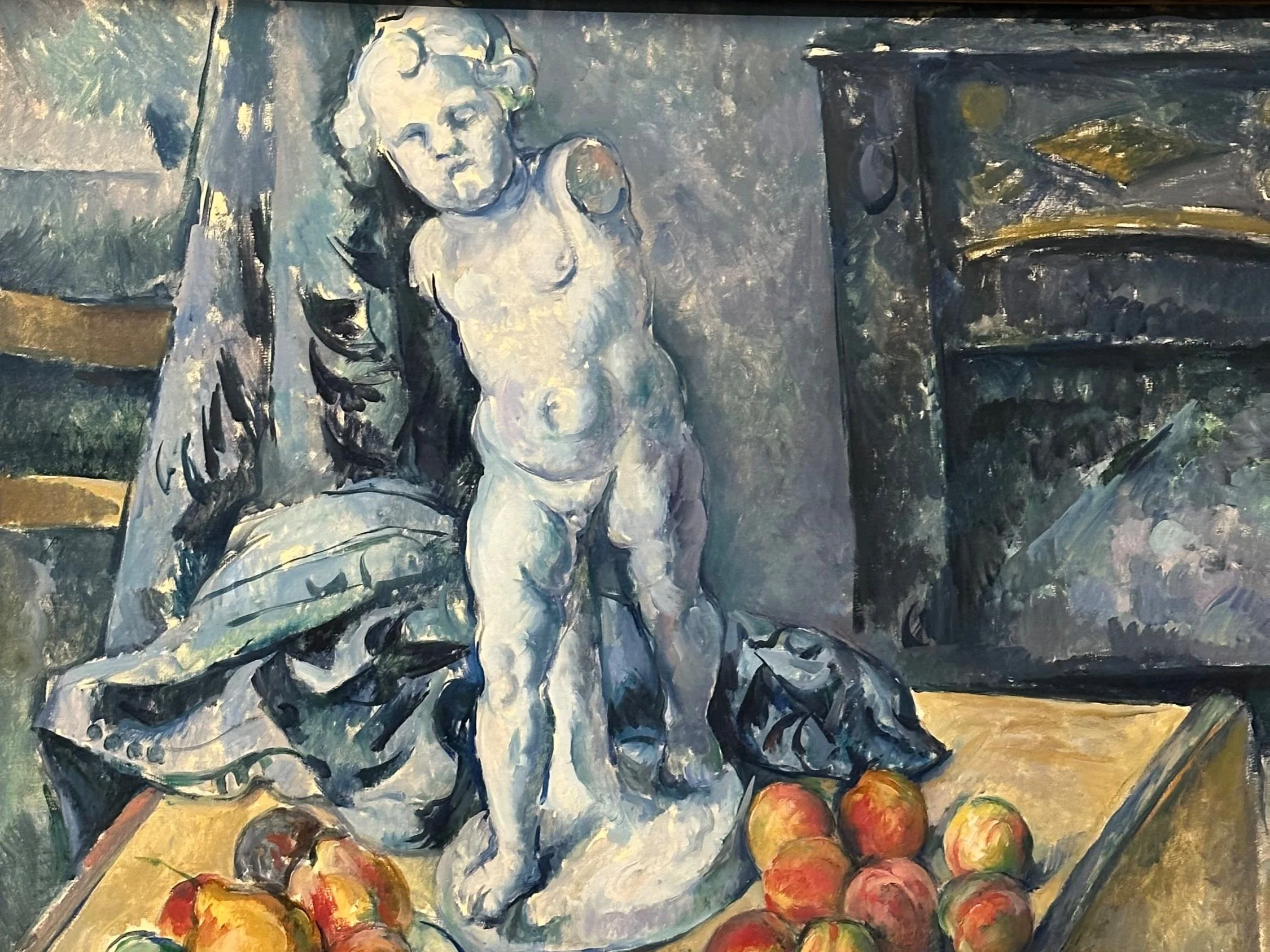2025: The Year of Cezanne
If you are headed to Provence in the summer or fall of 2025, it is worth adding a stop to Aix-en-Provence to your trip this year. Aix has declared 2025 the year of Cezanne, with a blockbuster exhibition and several special openings.
The Jas de Bouffan, painted in the 1870s and on view at the exhibition. The Jas de Bouffan was Cezanne’s family home in Aix-en-Provence. He had a studio here and spent much of his career inspired by and at home here.
Who was Paul Cezanne? Paul Cezanne is one of the most well-known post-Impressionist painters. He is known for his still lifes, his portraits, and his paintings of Mont Ste-Victoire. Cezanne was born in Aix-en-Provence in 1839 to successful father. While he did bounce up to Paris throughout his life, most of his career was spent living and working in Provence. He is celebrated for his approach to painting, emphasizing the underlying structure of objects and using planes of color and repetitive brushstrokes to build form.
Self-Portrait, c. 1874. Paul Cezanne (1839-1906) was one of the most important Post-Impressionist paintings, bridging the gap between Impressionism and Cubism. He spent most of his career living and working in Provence.
The Jas de Bouffan, the Cezanne family home in Aix-en-Provence. It is especially open just for this special exhibition this family. We highly recommend a visit!
What to See
Cezanne au Jas de Bouffan - temporary exhibition at the Musee Granet, Aix-en-Provence (June 28th-October 13th). This exhibition covers the entire span of his Cezanne’s career: you will see his earliest paintings, which are generally darker than his later works, as well as some of his most iconic paintings. There are also a couple of rooms dedicated to the works he painted while living at his family home, the Jas de Bouffan.
Guided visit of the Jas de Bouffan mansion - The events surrounding the exhibition all center on the Jas de Bouffan, the Cezanne family bastide (country house) that was outside the city center of Aix (today the city has grown and the sprawl now encompasses the house). This site is important because Cezanne spent so much time painting here. His father purchased the house and constructed a studio for his son on the top floor. In addition, Cezanne also painted the walls of the several of the rooms and you can see digital imagery during your tour that recreates his wall paintings. **This building has been closed to the public for decades and I highly recommend a visit. Visits are by one-hour guided tour only in French or in English (book ahead on their website). Parking is tight so I recommend taking a taxi to this site.
Visit Cezanne’s studio at Les Lauves - Cezanne’s studio was recently closed for a short renovation and has reopened. Built in 1901, this was Cezanne last studio. You can visit his living quarters on the ground floor and his studio on the upstairs floor.
The Bibémus Quarries - these quarries are fascinating and a naturally beautiful area near Aix. Cezanne spent a lot of time here between 1890 and 1904 when he was working on his Mont Sainte-Victoire canvases. You can visit the quarries by guided tour in French or in English.
The living room at the Jas de Bouffan. Cezanne painted the walls of this large salon. Unfortunately later owners painted over them but this projection allows you to see what once was.
To Book:
Visit the city of Aix-en-Provence’s website to buy advance tickets to the exhibition or reserve a guided tour to the house or quarries.
Still Life with Cupid, 1890s. One of the many masterpieces on view at the Musee Granet in Aix-en-Provence this fall.




